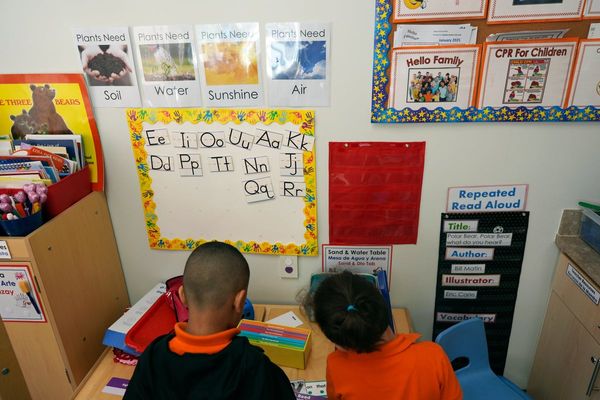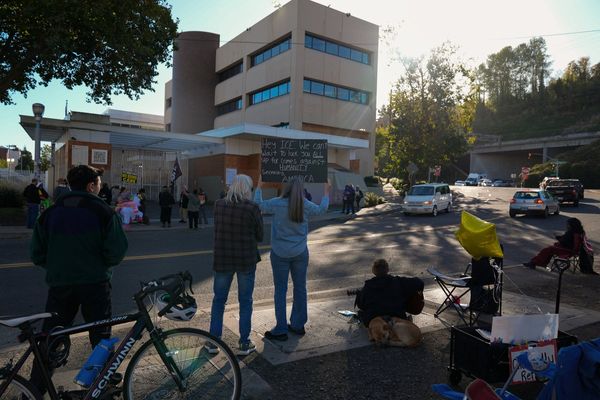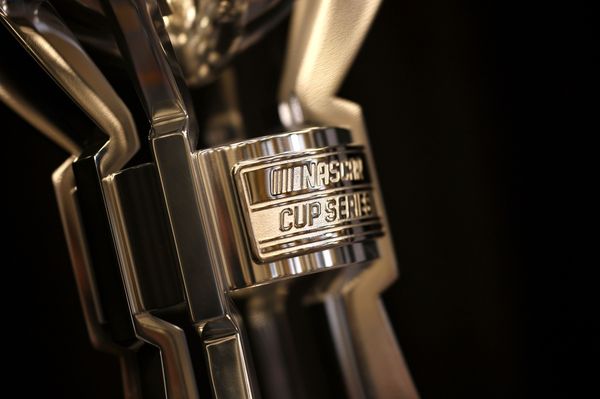
In Dartford, Kent, last week, a grand unveiling. The Glimmer Twins, featuring two of the town’s most famous sons, Mick Jagger and Keith Richards of the Rolling Stones, is the work of Amy Goodman, a sculptor hitherto best known for a bust of Florence Nightingale.
Goodman has captured the ageing musicians mid-performance: Richards is bent over his guitar, Jagger struts like a turkey. The council that commissioned her is, it seems, utterly delighted with the result. “We want young creative people to get a little bit of the Keith and Mick spirit and pursue their dreams,” said Jeremy Kite, the leader of Dartford borough council, as locals slowly took in the pair’s bronze vests, their outsize pouts and pointedly splayed legs.
But not everyone is impressed. Personally, I’m with the critic who called the statues inert, likening them to a couple of Madame Tussauds waxworks. In my mind, they have already joined a roll call of shame that includes The Meeting Place at St Pancras station, Paul Day’s irredeemably saccharine sculpture of a couple embracing; The Kelpies in Falkirk, a pair of gargantuan horse heads by Andy Scott that could only be any worse if they actually neighed; and, most terrible of all, Maggi Hambling’s unfeasibly awful memorial to Mary Wollstonecraft in Newington Green, north London, a silver Barbie doll (with full pubic hair) I have to pass at least once a week, and never without grimacing.
Grayson Perry isn’t wrong. There is an awful lot of bad public art around, and the pity of it is that, once it has landed, it hangs about like some alien spaceship on a hostile planet. However, the stuff he disdains – some of it looks, he says, like “an award you’d get from the Lawnmower of the Year Society” – is still vastly outnumbered by the good, the beautiful, the stirring, and the dazzling. If you know where to look, there is so much public art just waiting to be (re)discovered: a legacy as great as anything to be found in a gallery or museum. Here are some of my favourites …

Crystal Palace Dinosaurs (1854)
Benjamin Waterhouse Hawkins, Crystal Palace Park, south-east London
These extinct creatures – only three are true dinosaurs – were commissioned to accompany the Crystal Palace after its move from Hyde Park, and designed under the direction of the palaeontologist Sir Richard Owen; they’re now Grade I-listed. Scientifically, they’re wildly inaccurate. But in every other way, they’re perfect: endlessly surprising, vividly alive; an enduring memorial to our Victorian ancestors’ hunger for knowledge and discovery.
Wild Boar (1970)
Elisabeth Frink, Harlow, Essex
Harlow luxuriates in more public art than any other place in Britain, thanks to the far-sightedness of the new town’s postwar planners (the collection, still growing, includes more than 100 sculptures by artists such as Barbara Hepworth, Henry Moore and Auguste Rodin). Frink’s delightfully stylised bronze, Wild Boar, is to be found in the Water Gardens, its exaggerated legs and angular body giving the impression it might leap on to dry land at any moment.
The Miner (1964)
Arthur Fleischmann, St Helens
This beautiful bronze marked the invention of the Anderton Shearer Loader, a machine that revolutionised mining in the 1950s, and was first used at the Rushy Park seam at Ravenhead Colliery in St Helens. Fleischmann, Slovak-born but London-based, turned the steel cutting drum of one loader on its side to form the sculpture’s base. It now sits on a roundabout in the town, a memorial to the passing of an entire industry.
Three Ships mural (1963)
Alan Boyson, Hull
There were cheers all round when this huge mosaic, on the side of a former Co-op, was finally saved from demolition in 2021 (high levels of asbestos had been found in the building, empty since 2016). A modernist depiction of three trawlers, it celebrates Hull’s once-proud fishing fleet, their masts subtly spelling out the city’s name. It’s made from 1,061,775 tesserae (cubes of Italian glass), and when the sun shines, it’s almost as glorious a sight as that of the wide open North Sea.

Millicent Fawcett (2018)
Gillian Wearing, Westminster, London
Parliament Square’s first statue of a woman was erected after a campaign led by the activist and writer Caroline Criado-Perez. Look closely, and you’ll see that Fawcett, the British suffragist leader, wears a brooch on the lapel of her coat – a piece of jewellery modelled on one she owned. The banner she carries quotes from a speech she made in 1920. On the statue’s plinth are the names of 59 women and four men who supported votes for women, among them Emmeline Pankhurst and Emily Wilding Davison.
Untitled (Listening) (1983-84)
Antony Gormley, Maygrove Peace Park, Camden, London
Marvellous as they are, everyone knows about the Angel of the North in Gateshead and Another Place on Crosby Beach in Merseyside (33 million people a year see the former, thanks to its looming proximity to the A1). So I’m sending you instead to this earlier work in a small north London park. His left hand cupped behind his ear in a gesture that is both sensitive and watchful, Gormley’s lifesize nude crouches on a granite boulder – a symbol of the long history of our planet, sculpted only by time.
Conversation Piece(1998-2001)
Juan Munoz, Littlehaven, South Shields
Welcome to the beach, say these 22 bronze figures, known locally as the Weebles (after the children’s toys that famously weeble and wobble, but don’t fall down). Or do they? For while some of the Spanish sculptor’s figures are arranged in congenial groups, others stand alone, gazing outwards, isolated and friendless. Conversation Piece, strange and haunting, belongs to one of the most emblematic and sustained series in Munoz’s relatively brief career – he died suddenly, in 2001, at 48 – and South Tyneside is lucky to have it.
Double Somersault (1976)
William Pye, Sheffield
Pye’s most famous public sculpture is probably Zemran (1971), which can be found just outside the Queen Elizabeth Hall on London’s South Bank and is Grade II-listed. But I’ve always preferred this four metre-high corkscrew at Sheffield Children’s Hospital, where I had my tonsils out (I could see it from the window next to my bed). Constructed (of course) from stainless steel – in the 1970s, Pye liked to incorporate industrial components in his work – it brings to mind, very pleasingly, a tuba or euphonium.
• This article was amended on 13 August 2023. Jeremy Kite is leader of Dartford borough council, not Dartmouth as an earlier version said.







